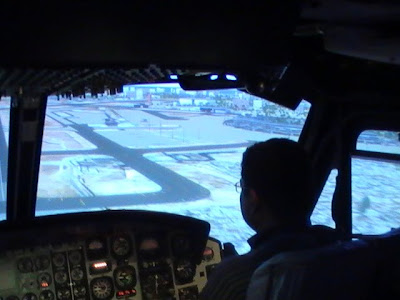The Bell simulator (above) and (below) Capt Krishna, Chief of Training, during a sortie above Mumbai airport, sitting in Bangalore!
The flying fraternity in India will hopefully give a standing ovation to the man above -- Wg Cdr (Retd.) C.D. Upadhyay, CEO, HATSOFF -- for running from pillar to post to gift India, probably one of the most-sophisticated helicopter simulation facilities. Photos: t-arch-2010
By Anantha Krishnan M. | Aviation Week
Bangalore, India | June 18, 2010
The Helicopter Academy to Train by Simulation of Flying (HATSOFF) – a 50/50 joint venture between Hindustan Aeronautics Ltd (HAL) and simulation technology company CAE, Canada, is finally ready to go live. Though the facility’s official inauguration may not be until September, the Rs 300 crore ($65.2 million) high-tech facility is set to informally go live next week. The first Bell 412EP cockpit is ready for training, and the European Aviation Safety Agency (EASA) has already granted its certification, with approval by another agency pending. AVIATION WEEK spoke to Wing Cmdr. (ret.) C.D. Upadhyay, the CEO of HATSOFF, as part of its India Thought Leaders (ITL) interview series.
AW: How significant will the contribution of HATSOFF be to the Indian helicopter industry?
C.D.U.: It has been recognized all over the world and at the highest levels in Indian aviation, including the Civil Aviation Ministry, that there is an urgent requirement for simulator(s) for helicopters flying in India due to a significantly higher rate of human error contributing to helicopter fatal accidents. Human error in helicopter accidents is higher by an order of magnitude when compared to fixed wing aircraft. We at HATSOFF are confident that the simulator training which we will be imparting to the helicopter pilots will soon reduce this factor in helicopter accidents. Besides the flight safety aspect, we are also very sure that the recurrent training and other forms of training which will be given at HATSOFF will maintain and improve the professional efficiency of helicopter pilots to meet the challenging tasks of the 21st century.






















